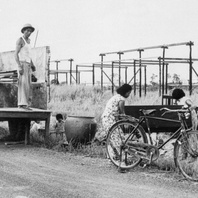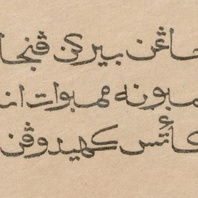Introduction
The Malayan Emergency was a Cold War, anti-colonial conflict that took place between 1948 and 1960 on the Malay Peninsula. The conflict, which began in June 1948 following the murder of three Western planters near Perak, was fought between British colonial and Commonwealth forces and members of the Malayan Communist Party (MCP) and the Malayan National Liberation Army (MNLA). The latter two organisations primarily consisted of and were led by those within Malaya’s large ethnic Chinese population, many of whom were landless workers (or “squatters”, as they were labelled at the time) who lived in Malaya’s interior spaces. Although Malaya won its independence (Merdeka) from colonial rule in 1957, most scholars date the Emergency as ending in 1960. However, owing to a lasting communist insurgency in the region as well as the fact that Emergency policies have remained in place well after the period of decolonisation (in some cases until today), the Emergency and its afterlives remain important in the contemporary world.
Although scholars often situate the Malayan Emergency as a Cold War struggle, a broader popular interest in the Emergency period has thrived over the last half century. This interest, which began with the publication of Robert Thompson’s 1966 book, Defeating Communist Insurgency: The Lessons of Malaya and Vietnam, endures because some scholars, particularly those interested in military history and military strategy, view the conflict as an early model for counter-insurgency warfare, which would later be utilised in other conflicts around the globe. In Malaya, these ideas were exemplified in the character of Field Marshal Sir Gerald Templer, who served as High Commissioner of Malaya beginning in 1952 and who coined the infamous notion that, to win the conflict, Britain need to win “the hearts and minds of the people”.
Scholars interested in counter-insurgency warfare during the Emergency have focused on a variety of political and military factors that drove British efforts in the colony – such as intelligence gathering, policing and propaganda – but one idea became central to how the conflict proceeded: the resettlement of Malaya’s rural population. First discussed privately in the early days of the conflict but later enshrined as policy following the crafting of the so-called Briggs Plan (named after the Director of Operations in Malaya, Sir Harold Briggs) in 1950, the idea of resettlement was to relocate Malaya’s large rural population into new village spaces in order to cut off supplies, money and reserves of manpower to the jungle-based communist insurgents. While in some cases this meant moving estate and mine workers into more concentrated spaces closer to their sites of work, the largest and most impactful move towards resettlement was the creation of over 450 New Villages throughout the colony. These New Villages, which were originally barbed-wired and operated as sites of heightened surveillance and bodily control, were primarily populated by Malaya’s large ethnic Chinese community, who the British colonial government forcibly relocated from their homes in the Malay interior. In total, around 10 per cent of Malaya’s total population – or approximately 500,000 people, depending on the estimate – was resettled into New Villages. Many such villages remain in existence today.
Nevertheless, and while much scholarship on the Emergency has focused on the scope and repressive nature of Malaya’s New Villages, resettlement and notions of spatial control were not limited to such spaces. In addition to New Villages, the British colonial government fashioned a variety of new spatial designations in the colony, all of which impacted the region’s populace on a large scale. This included the creation of White and Black Areas, the use of detention centres and new spaces of incarceration, as well as the formation of “regrouping” areas in Malay kampongs (villages) and in the colony’s many foreign-owned large rubber plantations and mining sites. These policies, which the colonial government enacted to resettle and “fix” Malaya’s population into more concentrated and therefore “legible” and controllable spaces, were deployed throughout the Malay Peninsula. In their totality, such policies affected nearly the entirety of Malaya’s large and diverse population.
In this case study, compiled by Dr David Baillargeon, you can access mapping data linked to the resettlement policies enacted under the Emergency, and also a comprehensive bibliography of scholarship in English on the Emergency. If you have any additional data or information that might prove useful in correcting the data provided in the digital map, or if you simply wanted to provide some suggestions or comments about the Case Study, contact the COTCA Director: Jeremy E. Taylor (jeremy.taylor@nottingham.ac.uk)
Follow the “Themes” links below.

